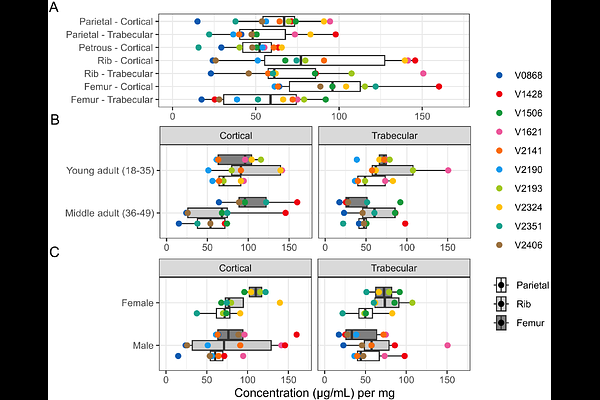Composition variations in archaeological human bone proteomes

Composition variations in archaeological human bone proteomes
Asmundsdottir, R. D.; Troche, G.; Olsen, J. V.; Schrader, S.; Welker, F.
AbstractSampling strategies within the field of skeletal palaeoproteomics are often based on specimen availability. Knowledge of bone biology might assist in improving sample selection strategies and minimise unnecessary sampling of precious (hominin) material. We study ten bone sample locations across four bone elements, for a total of 10 adult, archaeological human skeletons. We compare bone proteome composition and modification for skeletal elements formed through endochondral and intramembranous ossification, as well as cortical-trabecular bone pairs of three skeletal locations. We observe minimal differences in bones formed through the two ossification processes, outside of the exclusive presence of cartilage-related proteins in endochondral bone samples. We observe higher protein concentrations, a larger number of protein groups and peptides, and lower rates of deamidation in cortical bone compared to trabecular bone proteomes, this indicates that cortical bone provides a better preservation environment compared to trabecular bone. Throughout our analysis, the petrous bone stands out, with the largest and most complex proteomes recovered for all studied individuals. Formed through endochondral ossification, the petrous bone undergoes minimal turnover during life. Our observations indicate that the petrous bone is the ideal source of ancient protein sequence information.